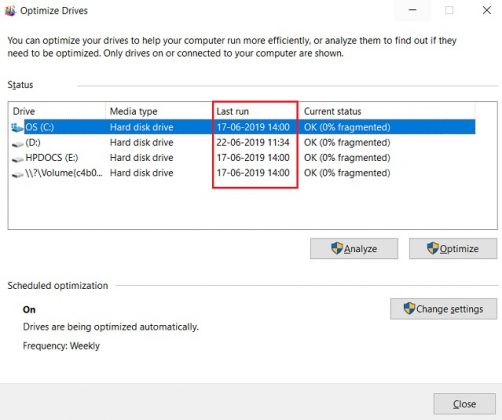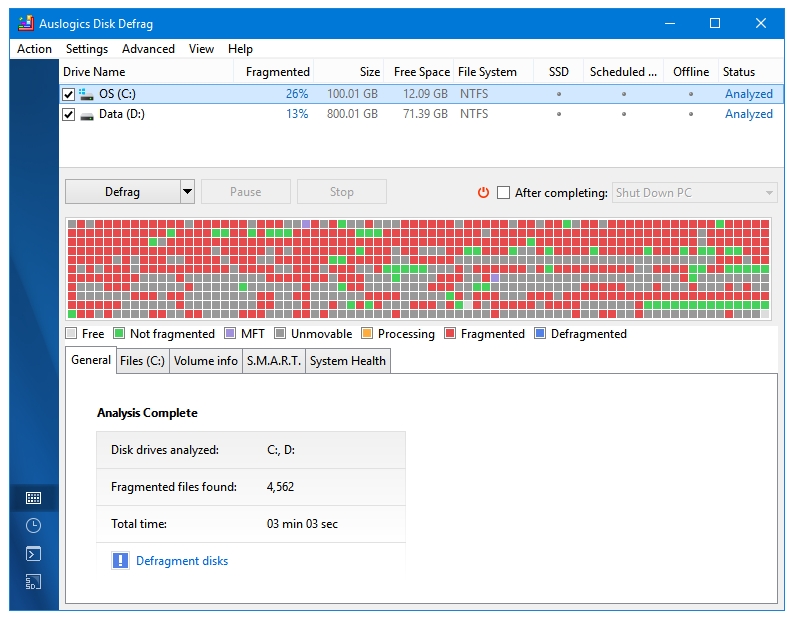

- #Best defrag for windows 10 2018 install#
- #Best defrag for windows 10 2018 password#
- #Best defrag for windows 10 2018 license#
#Best defrag for windows 10 2018 password#
#Best defrag for windows 10 2018 license#
Check to accept license terms and Next.Select Windows 10 pro, or the available version according to your region/image and click Next.You will be returned to the previous screen of windows installer, leave everything by default, we can change this later.Type and hit Enter in the following order:.Press Shift-F10 to open a command prompt to create a partition for reserved space compatible with VDI.Now to Exittab and click Exit Saving Changes (or hit F10 ) to save the settings and reboot.Īfter the VM is rebooted, you will reach the first screen of the Windows installer.Wait to get to the BIOS and from the Advanced tab, go to I/O Device Configuration and disable the Floppy drive, also the Serial, Parallel, and Floppy Controllers. Now power on the VM and open the VM remote console.Finally, review your configuration and click Finish.On the new window, Configuration Parameters, add a new parameter:.Note: Steps 13 to 16 are not needed on vSphere 6.7. Go to Advance, and from Settings uncheck Enable logging.From Boot Option, check Force BIOS setup - The next time the virtual machine boots….Do not check Enable 3D Support unless you have Graphics Card support on your ESXi hosts.Also, Number of displays can be set to only 2. Note: Total video memory is usually configured up to 128 MB, but for my scenario, I do think is not necessary.


Note: This is the vSphere Client set in part 7 of this series, due to our desktop infrastructure will be deployed here.
#Best defrag for windows 10 2018 install#
Create/upload an ISO with all the programs you will install or, make sure you can obtain them after connecting the VM to the internet.įirst off is to create and configure this new VM to be used as a Client.Download Windows 10 64-bits and MS office 2016 ISO file and upload it to an accessible datastore.Domain Controller server previously created in Part 5 of this series


 0 kommentar(er)
0 kommentar(er)
